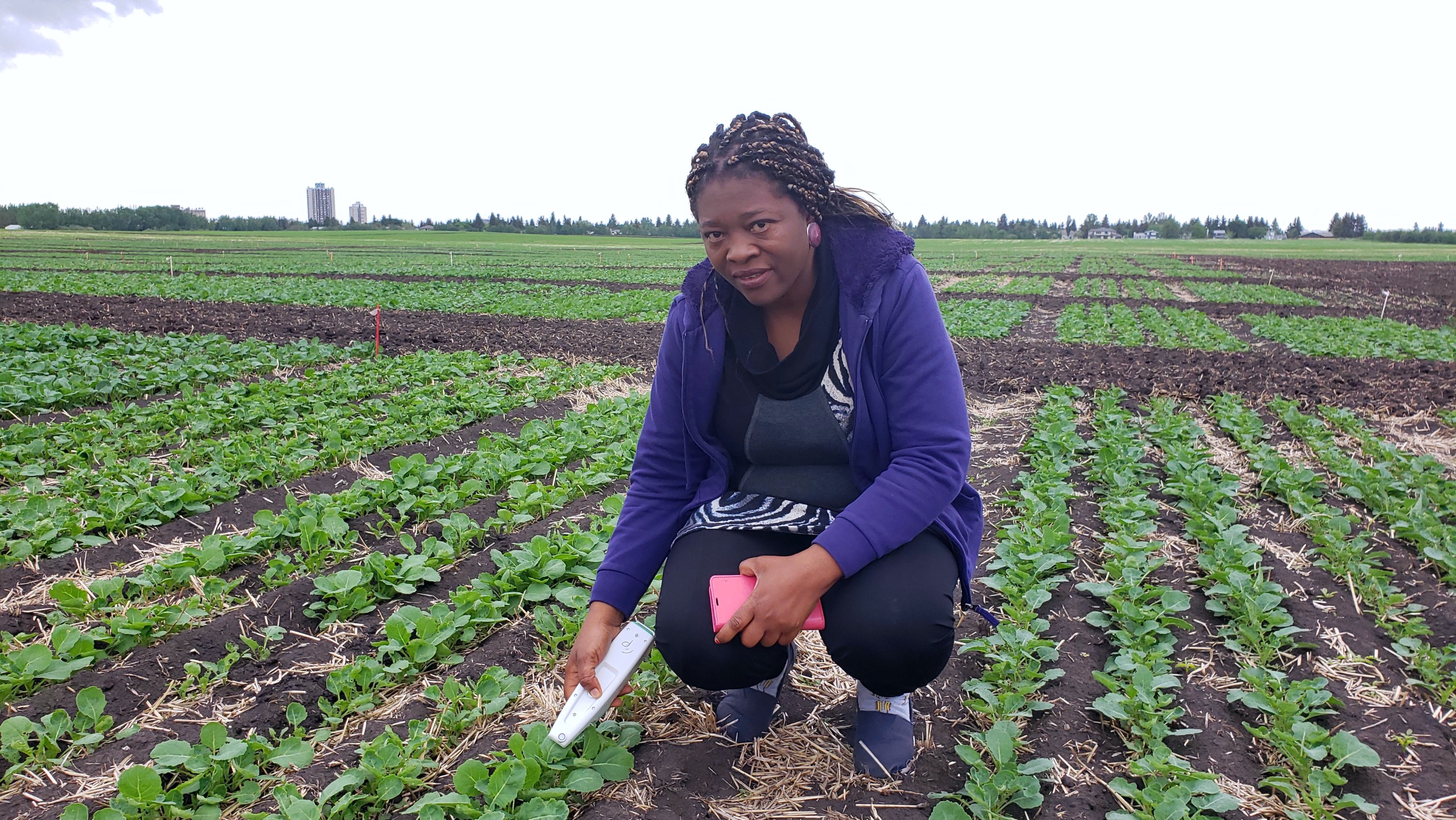Alberta, Canada
July 23, 2021
 Plant scientist Linda Gorim is leading a team using high-tech handheld devices to find out which canola breeds are best at photosynthesis, with the goal of improving yields for Canadian farmers. (Photo: Supplied)
Plant scientist Linda Gorim is leading a team using high-tech handheld devices to find out which canola breeds are best at photosynthesis, with the goal of improving yields for Canadian farmers. (Photo: Supplied)
A University of Alberta researcher is working to capture the power of sunshine to boost canola yield for western Canadian farmers.
Over the next three years, plant scientist Linda Gorim of the Faculty of Agricultural, Life & Environmental Sciences (ALES) will assess up to 300 breeding lines of canola from around the world to find out which are best at photosynthesis—a plant’s natural process to draw energy from the sun to grow.
“Scientists and farmers are interested in the idea of capturing the sun, which is a free resource, and if we can get higher plant output together with optimizing fertilizer use in cropping systems, it makes sense,” said Gorim, who is the Western Grains Research Foundation Chair in Cropping Systems.
Tasked with studying interactions between plants, soils, crop management and the environment, Gorim’s research program focuses on developing productive, sustainable and resilient cropping systems on the Prairies. This particular research focuses on harnessing the potential of photosynthesis.
“We want to identify lines with superior photosynthetic capacity, with the end goal of boosting yield.”
Similar assessments for photosynthetic capacity are being done globally for wheat, but Gorim’s work at the U of A is the first to measure it in canola in the field. “Photosynthesis is meant to be studied outside, which is better than in a lab.”
The budding research is crucial to finding new ways to increase canola yield. The average harvest in Canada is about 0.91 tonnes per acre, but the Canola Council of Canada has set a desired target to get that number to 1.18 tonnes by 2025, said Gorim.
“Developing higher-yielding varieties has the potential for higher profit margins for farmers.”
Canola contributes $29.9 billion per year to the Canadian economy and is also an important global export, totalling $11.9 billion a year.
In the past, breeding strategies coupled with different crop management strategies have been used to improve crop yields, but these approaches are at saturation for many crops, Gorim noted. “So exploring photosynthetic traits is a good option to incorporate into breeding programs.”
Using a handheld device called the MultispeQ meter, Gorim and her technicians, graduate students and summer assistants will spend the summer collecting data from field plots at U of A Sector 14, South Campus. The preprogrammed, stapler-like gadget, paired to their smartphones, is clipped onto the plants to track which breeding lines are capturing light energy from the sun more efficiently than others.
The data, recorded on a PhotosynQ platform, can be downloaded in spreadsheet format from any computer for error-free analysis.
“It’s basically a tap, measure and click process that can be used by scientists and farmers alike,” Gorim said.
The device can also be used in any crop with green plant parts, added Gorim, who has used it to compare chlorophyll fluorescence traits under drought versus fully watered conditions in lentil germplasm at the University of Saskatchewan.
The canola research project gives U of A graduate students valuable experience using the MultispeQ meter, which has already shown potential in the United States and Africa as a low-cost, user-friendly tool for farmers to quickly gauge and treat the condition of their fields, rather than waiting for lab results.
The entire research project “puts the University of Alberta on the map” in using new innovations, Gorim said. The extensive PhotosynQ platform also gives the young scientists she trains the opportunity to network with other plant researchers, analyze large data sets and explore other findings.
“It’s exciting to expose students to different experimental designs and ideas. It really gives them the opportunity to be innovative and grow.”
The research project, which is co-led by ALES professor Habibur Rahman, is being supported by Results Driven Agriculture Research and the Canola Council of Canada.